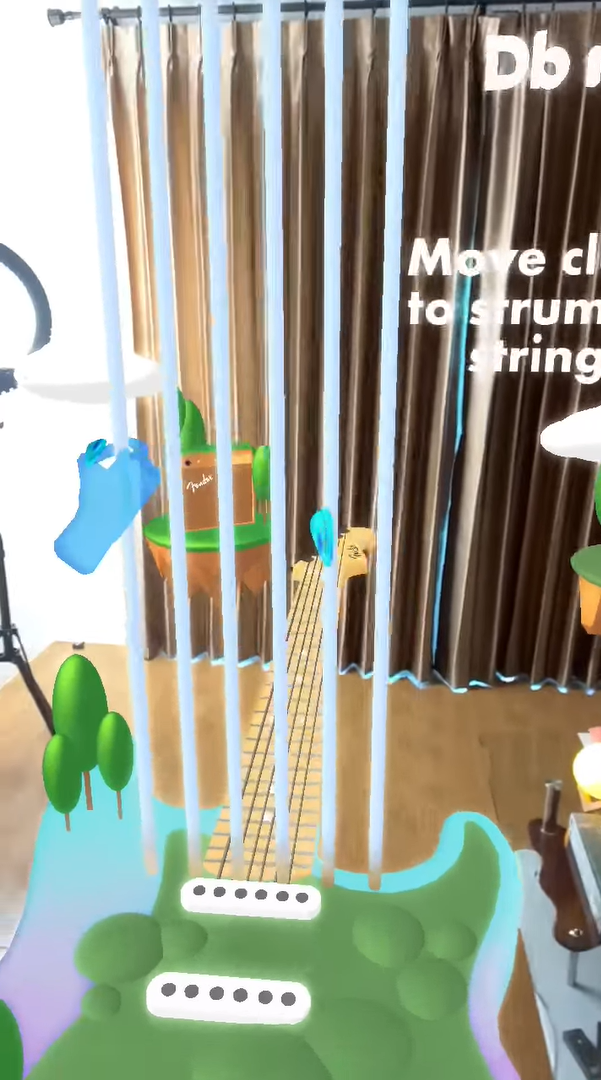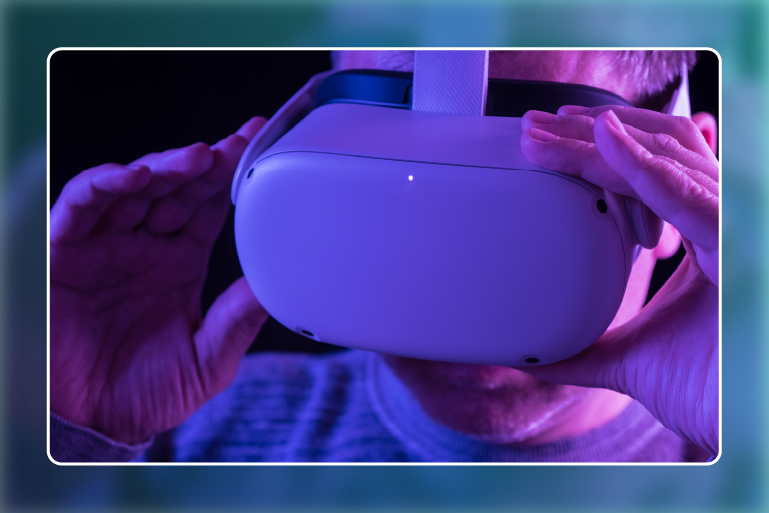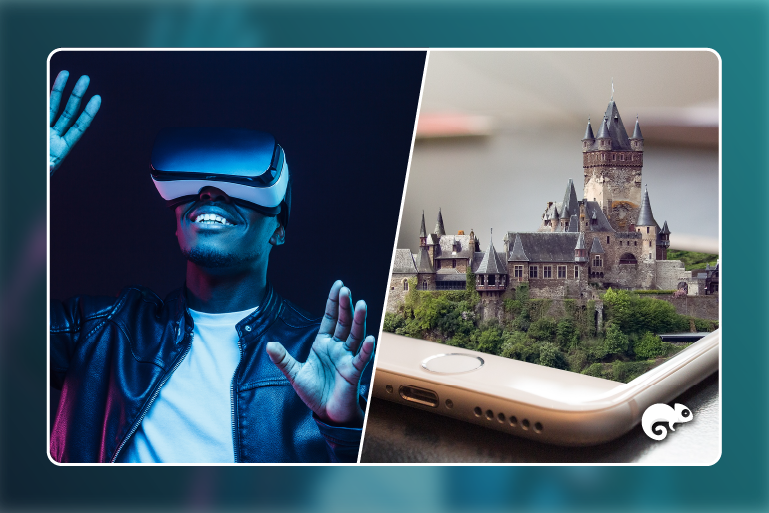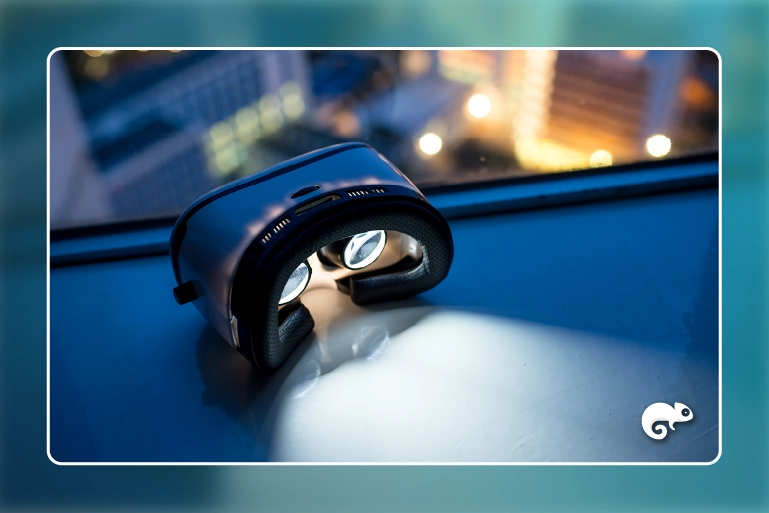How many advertising messages do consumers receive per day? According to the CEO of the agency Sancho Bbdo, Carlos Arango, “Some studies suggest that a person can receive between 3,000 and 5,000 advertising messages from the moment they wake up.”
In a world where consumers’ attention spans are getting shorter, creative directors and innovation leaders face a challenge: finding new ways to capture attention and make an impact.
 Augmented Reality (AR) is a tool that can help creative agencies and businesses overcome this challenge.
AR allows for the overlay of digital elements onto reality, creating more immersive and engaging experiences. This can help brands stand out from the competition and connect with consumers in a deeper way. Watch the following video if you want to better understand what this technology entails.
Augmented Reality (AR) is a tool that can help creative agencies and businesses overcome this challenge.
AR allows for the overlay of digital elements onto reality, creating more immersive and engaging experiences. This can help brands stand out from the competition and connect with consumers in a deeper way. Watch the following video if you want to better understand what this technology entails.

 For brands interested in utilizing augmented reality, Jeremy Cox offers essential tips. First and foremost, it’s important to ensure that AR is the right choice for the campaign’s objectives and target audience. It should not be used just because it’s a trend but because it has the potential to create a unique and effective experience.
Additionally, the user experience should be seamless and straightforward to engage people and guide them through the experience. Finally, working with an innovative AR development partner is essential to overcome technical limitations and create amazing experiences.
For brands interested in utilizing augmented reality, Jeremy Cox offers essential tips. First and foremost, it’s important to ensure that AR is the right choice for the campaign’s objectives and target audience. It should not be used just because it’s a trend but because it has the potential to create a unique and effective experience.
Additionally, the user experience should be seamless and straightforward to engage people and guide them through the experience. Finally, working with an innovative AR development partner is essential to overcome technical limitations and create amazing experiences.

Cover Image Credits:
 Augmented Reality (AR) is a tool that can help creative agencies and businesses overcome this challenge.
AR allows for the overlay of digital elements onto reality, creating more immersive and engaging experiences. This can help brands stand out from the competition and connect with consumers in a deeper way. Watch the following video if you want to better understand what this technology entails.
Augmented Reality (AR) is a tool that can help creative agencies and businesses overcome this challenge.
AR allows for the overlay of digital elements onto reality, creating more immersive and engaging experiences. This can help brands stand out from the competition and connect with consumers in a deeper way. Watch the following video if you want to better understand what this technology entails.
How to Lead Effective Augmented Reality Implementation?
Virtual Reality (VR) has moved from being a futuristic technology to becoming a powerful tool in the marketing world, revolutionizing the way brands connect with their customers. When it comes to incorporating Augmented Reality (AR) into creative campaigns, it’s essential to go beyond the basics and address advanced strategies to make a difference.- Think of AR as a Tool, Not an End in ItselfAR is a powerful tool that can be used to create unique and memorable experiences. However, it’s important to remember that AR is just a tool. It’s not a magical solution to all marketing problems. Before implementing AR in a campaign, agencies should consider how AR can help achieve the campaign’s objectives. Will AR help increase brand awareness? Generate leads? Drive sales? Once you’ve identified the campaign’s objectives, you can start thinking about how AR can assist you in reaching them.
- Strategic Immersion in the Product:AR is not just about overlaying virtual elements onto the physical reality but about how those elements enhance the utility or user experience of a product or service. Agencies can lead this approach by thinking about how AR can be an integral part of the product itself. This could involve creating user manuals in AR, interactive tutorials, or even AR features that solve real problems for customers.
- Advanced Personalization:Personalization is a growing trend in marketing and advertising, and AR offers exciting opportunities in this regard. Creative directors can lead the collection and use of user data to tailor AR experiences to individual preferences and needs. This not only increases engagement but also fosters a deeper connection with the audience.
- Multisensory Interaction:AR isn’t limited to just sight. To create a deeper and more memorable impact, agencies can explore how to incorporate other senses, such as sound or touch, into AR experiences. Imagine a campaign where users can touch virtual objects or listen to immersive narratives. These multisensory experiences can leave a lasting impression.
- Integration of AR into Omnichannel Campaigns:Consistency is key in a successful marketing strategy. You can ensure that AR experiences are seamlessly integrated across all customer touchpoints, whether online, in physical stores, or at live events. This ensures that the brand conveys a unified and strong message.
- Advanced Data Analysis:Data collection is crucial in AR implementation. Creative directors can lead the use of advanced data analytics to better understand how users interact with AR experiences. This not only enables accurate performance evaluation but also provides valuable insights for future improvements and strategy adaptations.
- Exploration of New Contexts and Virtual Spaces:

- Strategic Partnerships:No one has all the answers, and AR is a constantly evolving field. Creative directors can lead the search for strategic partnerships with technology companies or AR content creators. These collaborations can provide additional resources, technical expertise, and access to cutting-edge technology that accelerates the implementation of AR in campaigns.
Case Study: Fender’s AR Activation Campaign
The case study of Fender and R/GA in collaboration with AR creator Florian Sabatier is a testament to how this technology can take interaction and user experience to a new level. Jeremy Cox, Group Creative Director at R/GA, emphasizes that augmented reality offers an unparalleled blank canvas for brands. It allows for the convergence of visual, auditory, and motion elements in the real environment, immersing people in a unique experience. The collaboration between R/GA and Fender resulted in an exciting AR effect that overlaid a virtual guitar into the user’s physical world, allowing them to play it through movements. This innovative AR experience took Fender’s brand narrative to an entirely new level. For brands interested in utilizing augmented reality, Jeremy Cox offers essential tips. First and foremost, it’s important to ensure that AR is the right choice for the campaign’s objectives and target audience. It should not be used just because it’s a trend but because it has the potential to create a unique and effective experience.
Additionally, the user experience should be seamless and straightforward to engage people and guide them through the experience. Finally, working with an innovative AR development partner is essential to overcome technical limitations and create amazing experiences.
For brands interested in utilizing augmented reality, Jeremy Cox offers essential tips. First and foremost, it’s important to ensure that AR is the right choice for the campaign’s objectives and target audience. It should not be used just because it’s a trend but because it has the potential to create a unique and effective experience.
Additionally, the user experience should be seamless and straightforward to engage people and guide them through the experience. Finally, working with an innovative AR development partner is essential to overcome technical limitations and create amazing experiences.
Additional Tips for Agencies:
- Collaborate with AR Experts: Augmented reality is a complex technology and can be challenging to implement without the assistance of experts. Agencies should work with AR development companies to ensure that their campaigns are successful.

- Test and Learn: Augmented reality is constantly evolving. Agencies should be willing to test new ideas and learn from their successes and failures.
Cover Image Credits:








